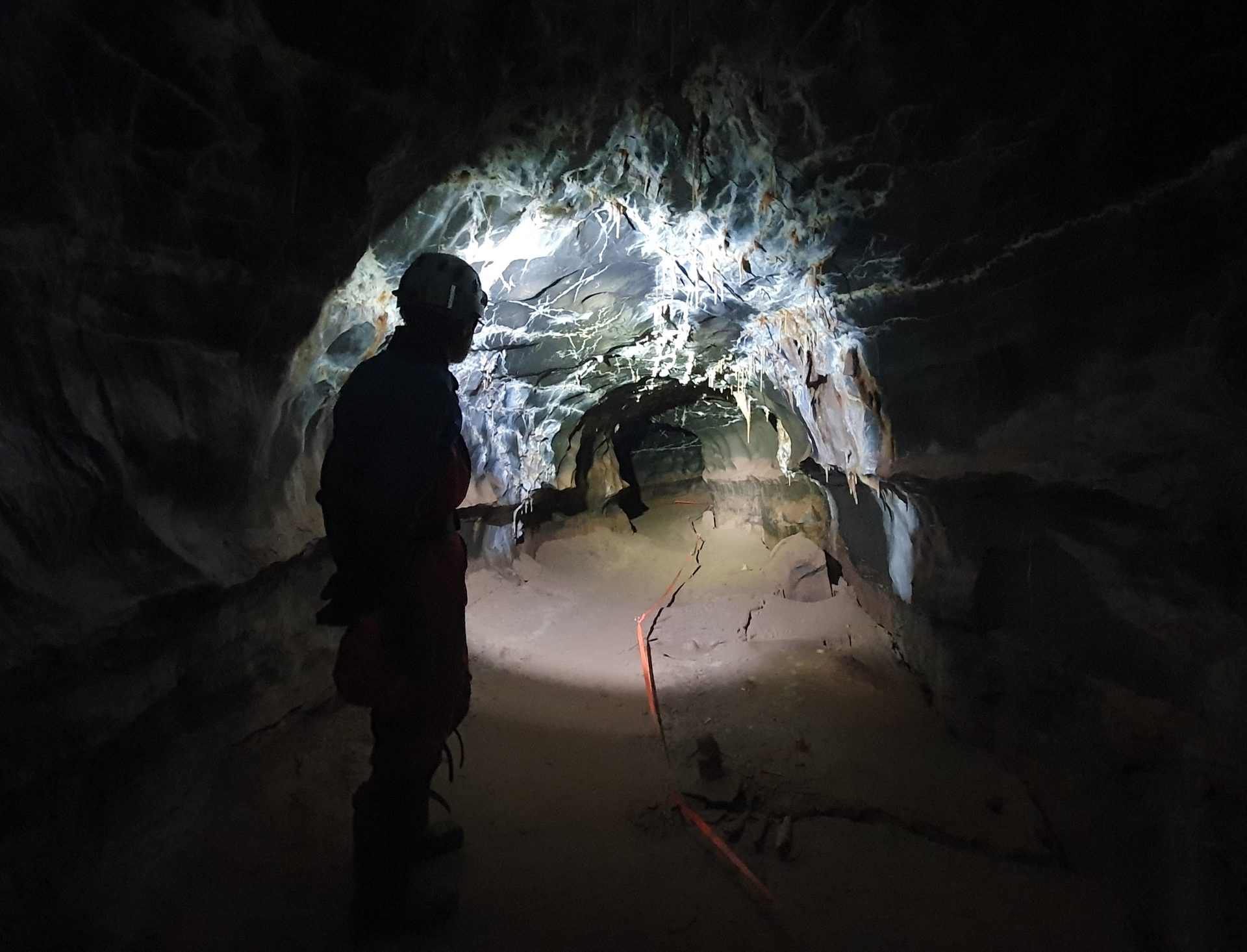
This account of a caving holiday in South Wales has no exciting discoveries, no dramatic incidents, and no unusual activities. But we hope Peter Burgess’ account of a caving trip to South Wales reminds our readers of the pleasures of simple caving that we have all been missing this year.
I returned to one of my favourite places with a huge amount of pleasure during a week of annual leave from work recently. I have been fortunate in the matter of paid employment during the COVID-19 pandemic, in that I have remained employed throughout and have only been subject to a few weeks on furlough. In a normal year, a fair bit of my annual leave is set aside for going away caving or spending time with family, and neither of these has been easy during much of 2020, or indeed even possible, with travel restrictions and cave closures in place for much of the time.
For this reason I had used very little of my normal annual leave allowance, and in common with most of my work colleagues, I had little incentive to book time off. My employer, understandably, was concerned about the huge amount of unused leave allowance accumulating across the business and by August was insisting on leave being booked even if we were not planning to do anything with it.
My choice of a week in September for five days’ holiday could not have been better planned. This was the last real week of true summer weather, caves had started to reopen, and our club cottage in South Wales was once more available for members to use. Over the summer, we had been carefully monitoring the changing levels of restrictions and regulations on the use of shared accommodation, and at the beginning of August had tentatively reopened our base for members to use, albeit with strict limits on numbers, frequency of use, and with new rules on how to keep the cottage safe.
In 2009, the Wealden Cave and Mine Society restored the old pub at Penwyllt into a hostel for its members, and is justifiably proud of what has been achieved. In normal times, up to twenty people can stay, but during these anxious times, numbers are limited to six. In the days leading up to my visit, a number of lockdowns of local authority areas in Wales were announced or being discussed in the news. Being in Powys, Penwyllt was not affected, but as more of Wales has come under lockdown restrictions, it’s easy to see how access to caving areas can change very quickly.
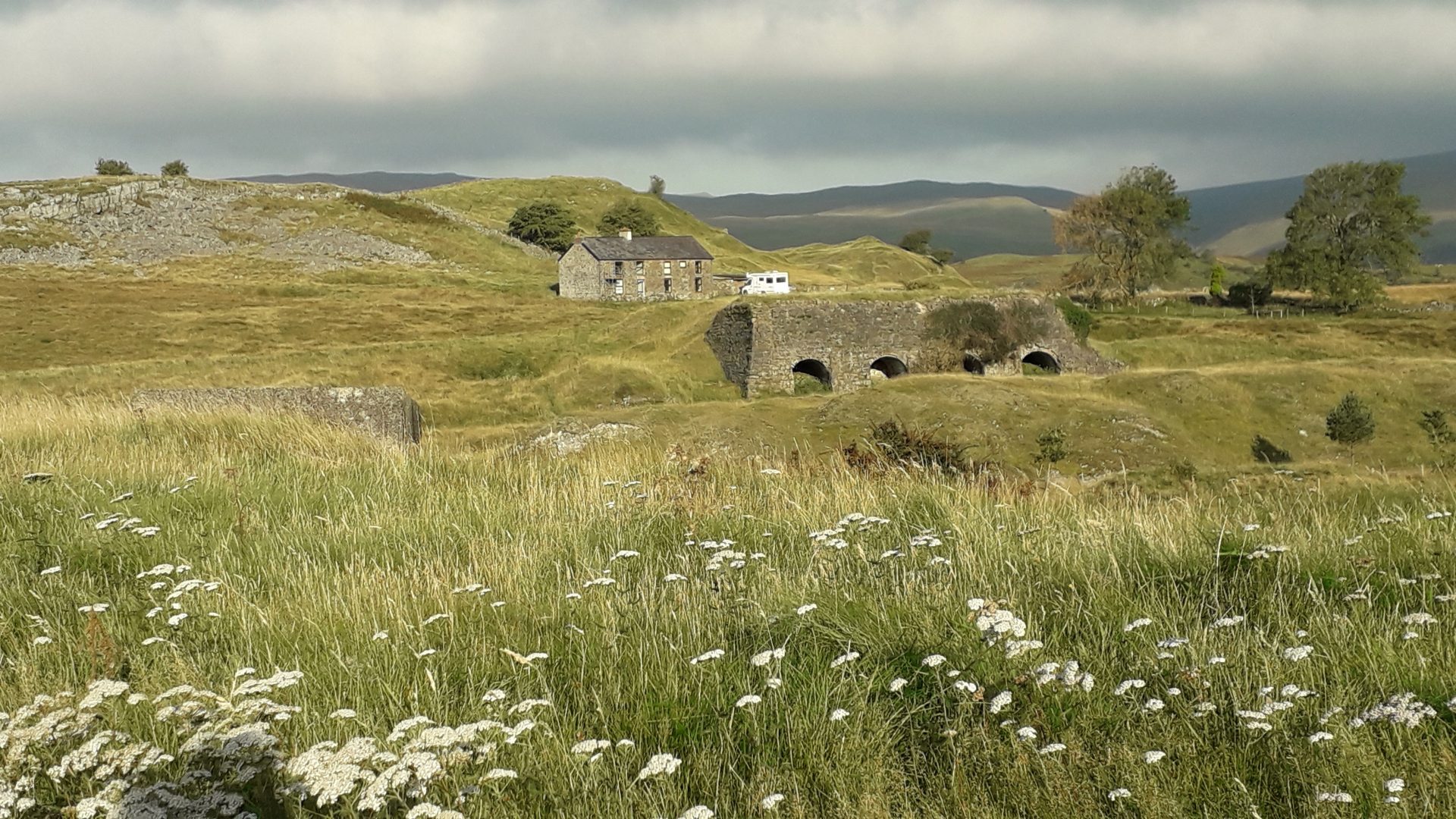
My fellow Darkness Below editors Graham and Linda were also free to visit Penwyllt while I was there, and so a plan came together to get away from home and spend a few quiet days caving and enjoying the hills. They brought a self-contained campervan, so this made arrangements simple for our use of the WCMS premises, with only myself actually in residence at “The Stump”.
South Wales Caving Club had recently published revised arrangements for access to Ogof Ffynnon Ddu, which involves requesting access codes for keys in advance of a visit. This worked really well, with my code request being very quickly addressed, and the process being easy to follow, despite there being several pages of COVID-19 related advice, all of which is important to read and understand.
Firstly, a code is provided that gives access to the vestibule where the keys are kept, each in a separate key safe for which another code is required. Secondly, there is paperwork to complete, but really no more information than is required in normal times when borrowing a key and planning a caving trip. Finally, it was essential to make our own rescue callout arrangements for each trip, as the usual ticket board system for callout is not being used.

We enjoyed three caving trips over three days, all in Ogof Ffynnon Ddu. Neither Linda nor Graham had visited the cave for many years, and I took it upon myself to facilitate a re-familiarisation programme! Our first trip involved Linda and I visiting some popular places from Top Entrance, as well as some less visited areas close to the entrance which Linda had not seen before. The start of the trip was delayed a little as I had absent-mindedly left the key behind at the Stump and only realised this halfway up the hill. This required me to perform the Walk of Shame past Graham, relaxing in the campervan! Sometimes you just can’t hide.
This first trip was one I have done on many occasions, simply because of the variety of passages traversed, and because it serves as an excellent introduction to the cave for any competent caver. First there is the Brickyard, where a bit of scrambling soon gets your caving muscles and balance into top gear. The passages quickly opens up to the wide and spacious Gnome Passage, and Chasm Passage, demonstrating the size and grandeur of so much of the cave system.
All the while, well-conserved calcite decorations can be sought out and admired. You then leave these oldest sections of the cave, and descend to lower areas where active streams flow through winding canyons down to the Main Streamway. We were not dropping any lower than the top of Maypole Inlet, however. We stopped to admire a grotto that, according to the SWCC survey lies immediately below the well-known Wedding Cake formation that we had passed a few minutes earlier. Onwards down Salubrious Streamway leads to the ever-popular Trident and Judge formations, and soon we reached the Crossroads.
Approaching Selenite Tunnel, you pass over President’s Leap, a short traverse, typical of many places in the cave. If I am introducing the cave to someone new to me, and they have got this far, this spot is one of the better places to judge their self-confidence. The traverse itself is pretty straight forward, but the open drop can put people off, and allowing them to work out for themselves without pressure whether or not to proceed is my usual practice. Should they wish to turn back, that’s what we do with no sense of failure as there is so much more to see in the cave, and plenty more challenges.
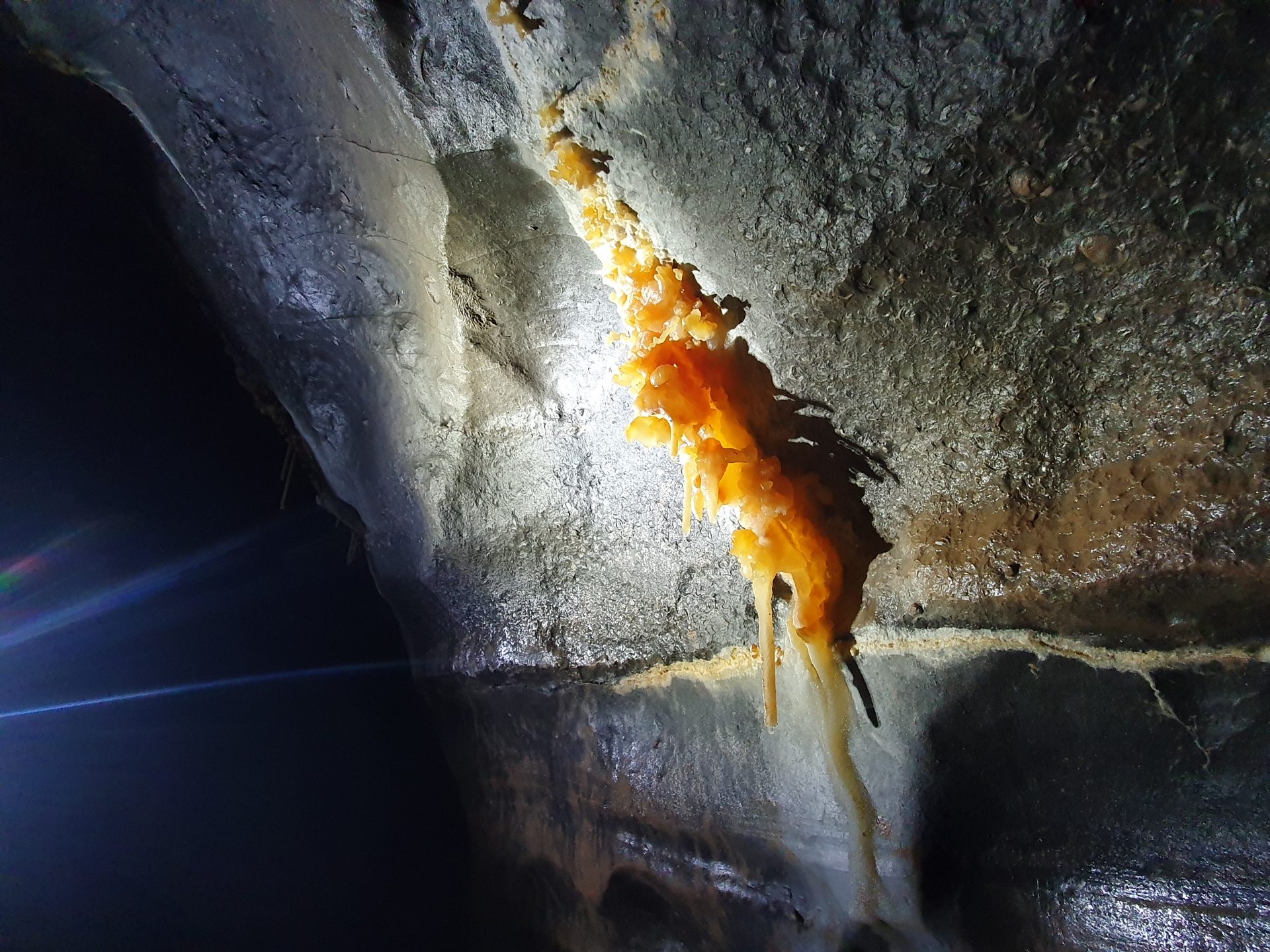
We continued along Selenite Tunnel, down to Cross Rift with its helictites and other decorations, and back to Crossroads. We returned to the entrance using the same route, and before finishing a really enjoyable trip, we took a brief look in an infrequently visited section of the cave, which leads towards the upper gate into the Columns Hall. This section has no name on the published survey, so we decided to name it “No Flies on Me” due to the large number of dead and decaying insects that litter parts of the wall here. For reasons it would be difficult to explain, one large tunnel-like passage earned itself the name “Flies Undone” – and no, it’s not what you think!
The second trip was to Ogof Ffynnon Ddu I, where for the past year or so I have been investigating the remains of an abandoned attempt to open the cave to the public in the 1950s. Having a fresh pair of eyes was very welcome, as Linda spotted a few features I had not noticed on previous visits. Being more familiar than me with the kind of things that are done to caves to make public access easy, Linda was able to throw a good light on what seems to have been planned for Ogof Ffynnon Ddu.
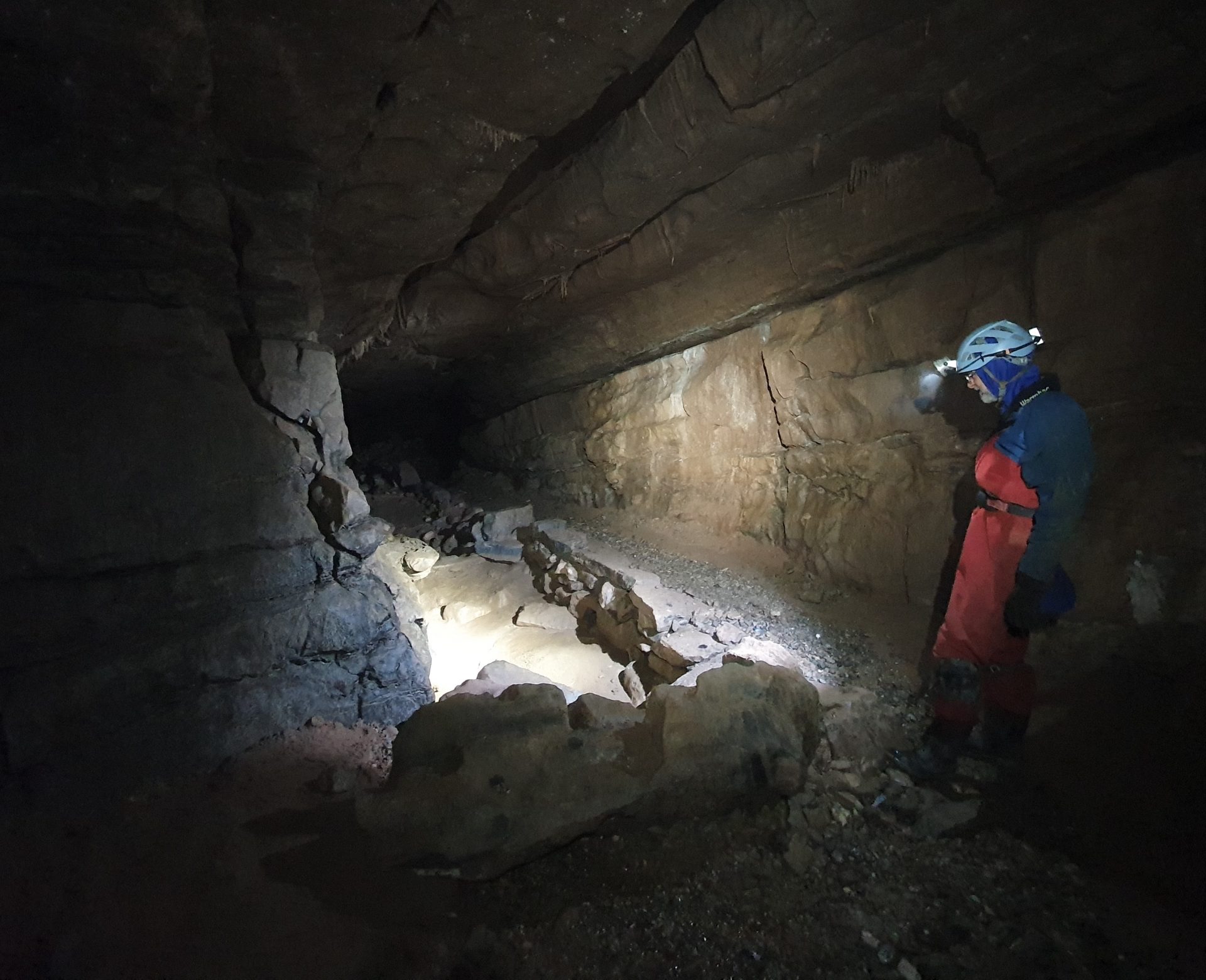
A splash up the streamway to the Boulder Choke and back reminded us how enjoyable this cave can be. More careful inspection of the showcave alterations revealed a few more features, and the trip was over all too quickly. That evening, Linda’s account of the trip resulted in a further visit planned for the next day, which Graham was keen to do.
A third pair of eyes on the final caving trip found yet more features of the aborted showcave work. There are not many abandoned or part-completed showcaves in Britain, and this has set in motion a train of possible future research to put the Ogof Ffynnon Ddu project into a wider context. As we looked around, a number of questions came to mind, which we realised we could not answer. For example, how many caves were once developed in some way as a visitor attraction?
There was just time to fit in a visit to see the owner of the Dan yr Ogof caves before it was time to thoroughly clean the cottage and prepare it for the next users. As Dan yr Ogof has succeeded in becoming a premier visitor attraction in the region, it provides an interesting contrast to what might have been on the Penwyllt side of the valley.
With further lockdowns and limitations on social interaction being mooted at the moment, we may have timed our caving very well in a brief window of opportunity. As I write this, Powys is still open, but it seems that this pandemic is far from over and is likely to have a severe impact on our favourite activity for many months to come.
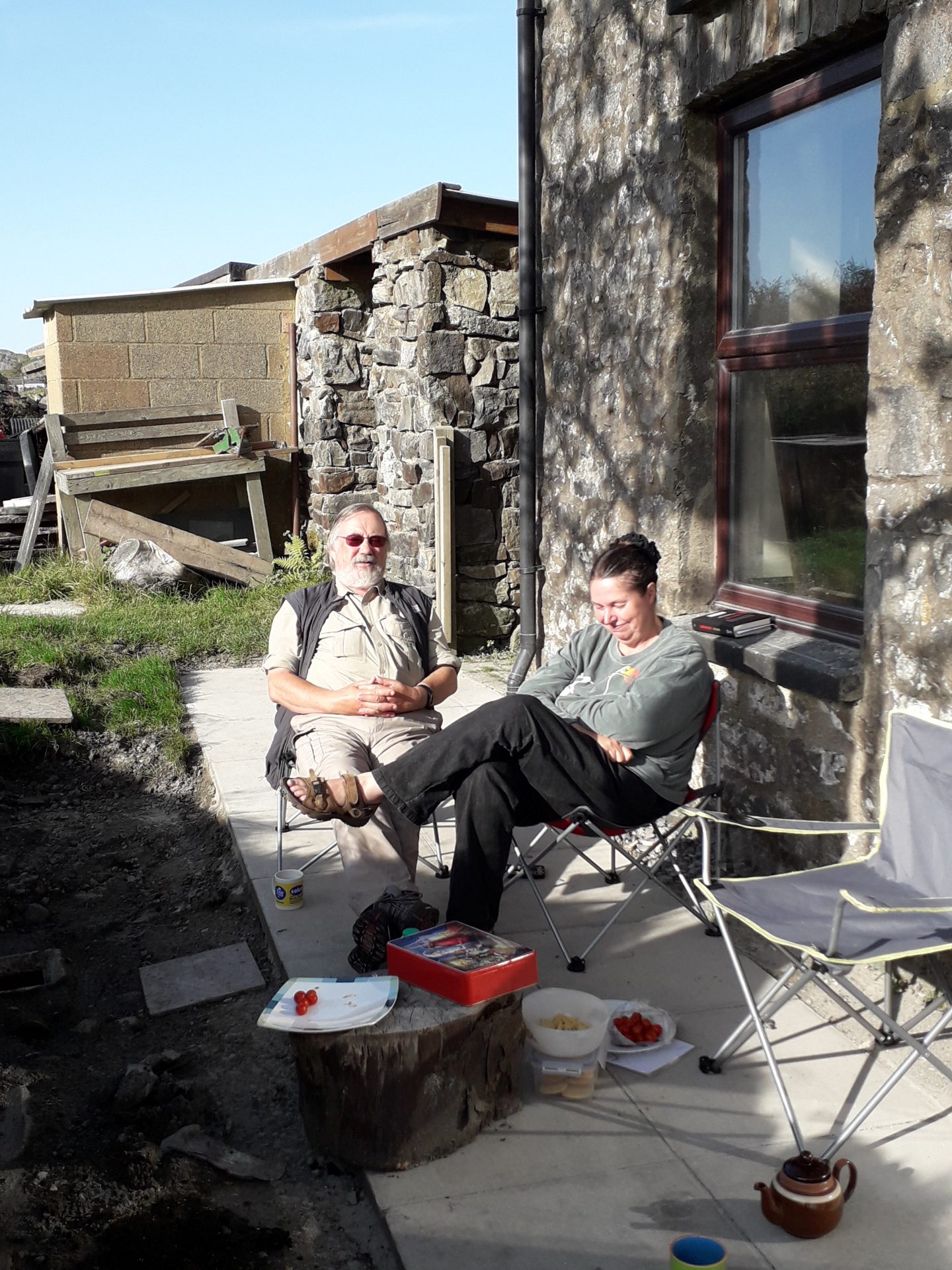
Of course, there is more to a good caving trip than just caving. This break allowed a few brief days in glorious weather, enjoying the quietude of a spot away from routine living and with ample opportunity to relax and chat about all manner of things. Catching up on current caving issues and the gossip doing the rounds, while sitting in the early autumn sun, was just one of the highlights.
Assuming access to Ogof Ffynnon Ddu remains possible, I would like to suggest a further helpful sentence to add to the SWCC access document : “Don’t forget to take the key with you to the entrance”.
Correspondent: Peter Burgess
